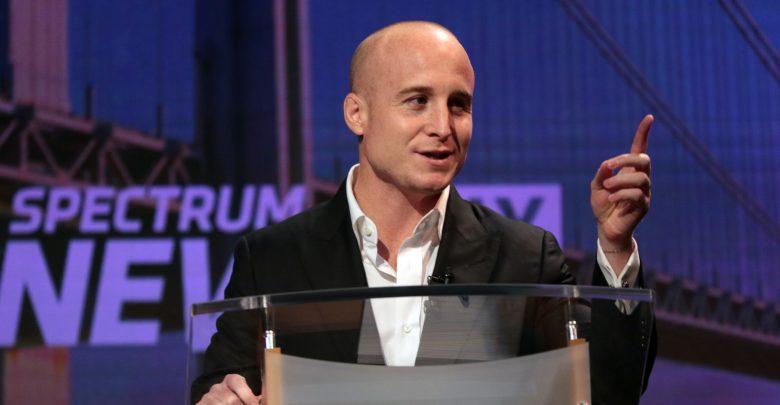
These Democrats Scored Shocking Victories in Republican Strongholds
November 9, 2018Who will be a good loser this time?
Soon after Anna Langthorn began her term as chair of the Oklahoma Democratic Party last year, it was time to face that question. As the leader of the party in one of the reddest states in the country, she faced the unenviable task of helping pick a respectable and viable candidate to run as a Democrat against incumbent, two-term Republican Steve Russell in Oklahoma’s Fifth Congressional District. “Viable in the sense that they would have some sense of credibility,” said Langthorn. "Someone who people would take seriously.”
But being taken seriously and actually winning are two different things. No one with any traditional or conventional political sense would have expected a Democrat to win an Oklahoma congressional district—even a more urban one like the Fifth, which contains Oklahoma City. “In recruiting [candidates], I would have said, 'You know, this is really a long shot, but it would be meaningful and valuable to the state and the party if you would put your name on the ballot,'” Langthorn said.
Before she could make her first call, Kendra Horn, the founder of Women Lead Oklahoma, a nonprofit group encouraging women to get involved in their communities, contacted Langthorn with what seemed like a lofty, crazy, and completely unrealistic goal—to not just run, but win. Langthorn met Horn at Hank's Coffee in downtown Oklahoma City, listening with little faith in Horn’s vision to win a seat that had been held by Republicans since 1975. “I wasn't super confident that it was going to happen,” she said. “I was concerned that she was going to put a lot into it and be disappointed.”
Horn saw promise in the 2016 presidential election results. Donald Trump won Oklahoma County—the district’s largest county—by only 51 percent to Hillary Clinton’s 41 percent, a significant drop for a Republican. (Libertarian Gary Johnson got 7 percent.) Mitt Romney carried 58 percent in 2012 and in 2004, Bush won 64 percent. Horn saw a new Oklahoma City becoming more diverse with growing numbers of young families and millennials. “The district was ripe to be flipped,“ said Langthorn. “We just didn't realize how ripe. She was endorsed by EMILY's List. She was endorsed by Planned Parenthood. She ran on healthcare and Medicaid, but avoided the labels of conservative or progressive Democrat.”
As the results of the 2018 midterms roll in—votes were still being counted on Friday in Arizona, Florida, and California, among other states—it’s clear that Democrats won big. They captured suburban districts they were expected to win, but they also earned shocking victories in what should have been Republican strongholds. Some of the most notable wins came in Staten Island, South Carolina, and Oklahoma.
The Democrats like Horn who won in notoriously red congressional districts faced the typical Republican tactics, such as speeches or campaign literature connecting the candidates with traditional GOP bogeymen like Barack Obama and Nancy Pelosi. In South Carolina’s First Congressional district, Joe Cunningham, who defeated Katie Harrington in the district held by Republican Mark Sanford, fought back by stressing his centrism.
“The day he announced his candidacy, he announced he would not back Nancy Pelosi for Speaker,” said Tyler Jones, who helped run Cunningham’s campaign. “And Joe was unapologetic about being a centrist. He said, ‘Look, the reason we’re not getting anything done in DC is because Republicans refuse to work with Democrats and Democrats refuse to work with Republicans,' and so his message was I want to work across the aisle to get things done... While our opponent was talking about how she was going to support Trump on everything, Joe said, ‘I will work with Trump if it helps the district and i will fight him tooth and nail if it hurts the district.’ And I think people recognized that authenticity.”
Max Rose, who defeated Dan Donovan, the lone Republican in New York City’s congressional delegation, also demonstrated a centrist streak when he criticized New York Mayor Bill de Blasio, popular with liberals, for ignoring Staten Island, which comprises the majority of his district. He also avoided the colors blue and red, using green as his campaign color. “You saw that on his campaign literature,” said David Watkins, who was a field captain for Rose in Staten Island. “A lot of green. It wasn't so much blue. It wasn't your red. It was green to highlight his military experience. It was strategic, deemphasizing party allegiance and focusing more on things that resonate with people in Staten Island.”
Watkins knocked on thousands of doors in Staten Island and trained a team of volunteers to do the same. The 23-year-old had previously worked on campaigns in districts that were solidly blue, but this time around he encountered more people with softer allegiance to parties, such as Obama-Trump voters. While John McCain narrowly defeated Obama in the borough in 2008, Obama beat Romney here in 2012 and Trump won Staten Island solidly in 2016. This compelled field workers to steer conversations with voters away from major partisan issues to focus on local matters. “I was always prepared to pivot to an issue that would resonate with most Staten Islanders,” said Watkins. “I talked about the opioid crisis and how Max was chief of staff at Brightpoint Health and the work done there, or I would pivot to infrastructure, talking about how Max wants to bring more federal funding so the island has better transportation options.”
There were times when this tactic didn’t work. Watkins recalls knocking on the door of a union man in a middle-class section of Staten Island. “He brought up loving Trump because of immigration and that there’s too many Hispanics coming to the country and they’re now the largest ethnic group in the United States, which isn’t true,” Watkins said. He decided not to do his usual pivot when he discovered the man’s Italian heritage. “I corrected him on the fact that Hispanics are not the largest ethnic group and said, ‘When your family came in the early 20th century to Ellis Island, they were treated poorly, they worked jobs that no one else wanted.’ I tried to shift the perspective to see the same parallel with his family and a lot of immigrants from Mexico and Central America… He kind of came around and said, well you know that’s a good point and even said, ‘ I think Trump was wrong in saying that we're going to make America great again' because he said America was never really like great if you look at all the immigrants who came over the years and were just treated poorly."
In the end, Rose beat out Donovan 52–47, which was actually a pretty wide margin when compared to the other Democrats who won in conservative districts. Horn and Cunningham each won 50–49, a margin of about 4,000 votes in both cases.
Even these narrow wins were unexpected. FiveThirtyEight gave Horn a one in seven chance of winning. More importantly, she was not on the national Democratic target list and received little support from the national party. Oklahoma Democrats say she had the most young volunteers ever seen in a local campaign. “We built an organization with them which helped to compensate for limited resources,” said Ward Curtin, Horn’s campaign manager.
The catch for all of these Democrats is that they’ll have to reproduce their success two years from now. Republicans are already looking at what can be done to win back the Oklahoma seat in 2020. Just as the Democrats altered their tactics to campaign in red areas, the GOP may need to reassess its messaging. “The Republican Party is suffering from a severe gender gap when it comes to urban females and even urban males,” said Trebor Worthen, a GOP political consultant based in Oklahoma. “Higher income and higher education levels kind of correlate to more reliable democratic voters and cities like Oklahoma City reflect the change. We need to develop candidates who can speak this audience and translate our agenda to them.”
David J. Dent, an author and associate professor at New York University, holds a joint appointment at the Arthur Carter Journalism Institute and in the department of social and cultural analysis. He is editor of the blog bushobamaamerica.com and the author of In Search of Black America. Follow him on Twitter.


